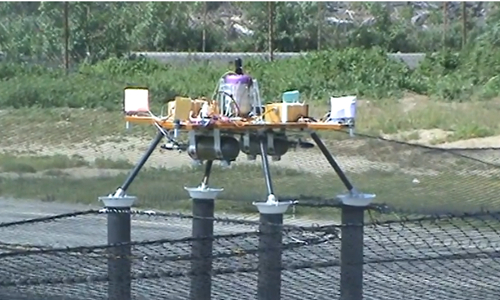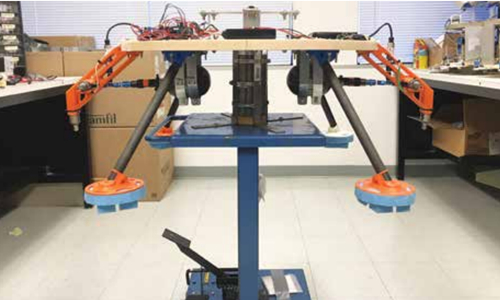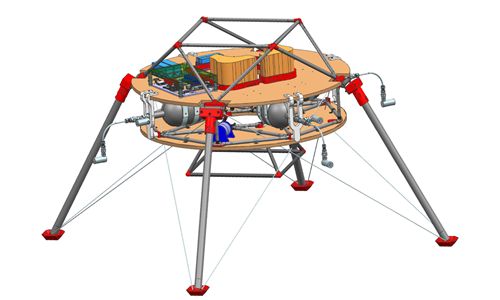Lunar Lander Prototype
A large area of research within the SERC faculty and students is around lunar landing and unique technologies. In 2006 SERC and students from campus created an Earth based testbed to evaluate landing and flight techniques for the lunar surface. LEAPFROG (or Lunar Entry and Approach Platform For Research On Ground) uses an air breathing engine to simulate lunar descent and profile flight in 1G. This was inspired in part by the LLTV and LLRV project back in the NASA Apollo days. This original project incudes full system engineering design and development of multi-impulse, complex attitude control systems, and the build and test of the control system through real time operating system electronics to stabilize and inherently unstable vehicle.
The project has evolved over time into several different design iterations and operations, and it continues to be a unique systems project that supports all USC students who are interested in aerospce systems to understand lifecycle of projects, and has a flight and operations components that in many cases, teaches through experience, both success and failure, far more to students than just class instruction.
As a result of the creation of LEAPFROG USC is honored to be part of a USCD/UCB consortium in SoCalifornia to support the NASA ARTEMIS STEM National Competition!
The step wise progression of LEAPFROG is shown below, along with photos and pictures of the students participation.
LEAPFROG GENERATION 0
Inspired by the Apollo Lunar Landing Research Vehicle, SERC’s Lunar Entry and Approach Platform For Research On Ground (LEAPFORG) Generation-0 was a design-to-flight student hands-on project to build a robust, low-cost hovering platform to simulate lunar gravity.


LEAPFROG GENERATION 1
Generation-1 of LEAPFROG will use a larger thrust engine to provide a >1.25 thrust-to-weight ratio.
LEAPFROG GENERATION 2
